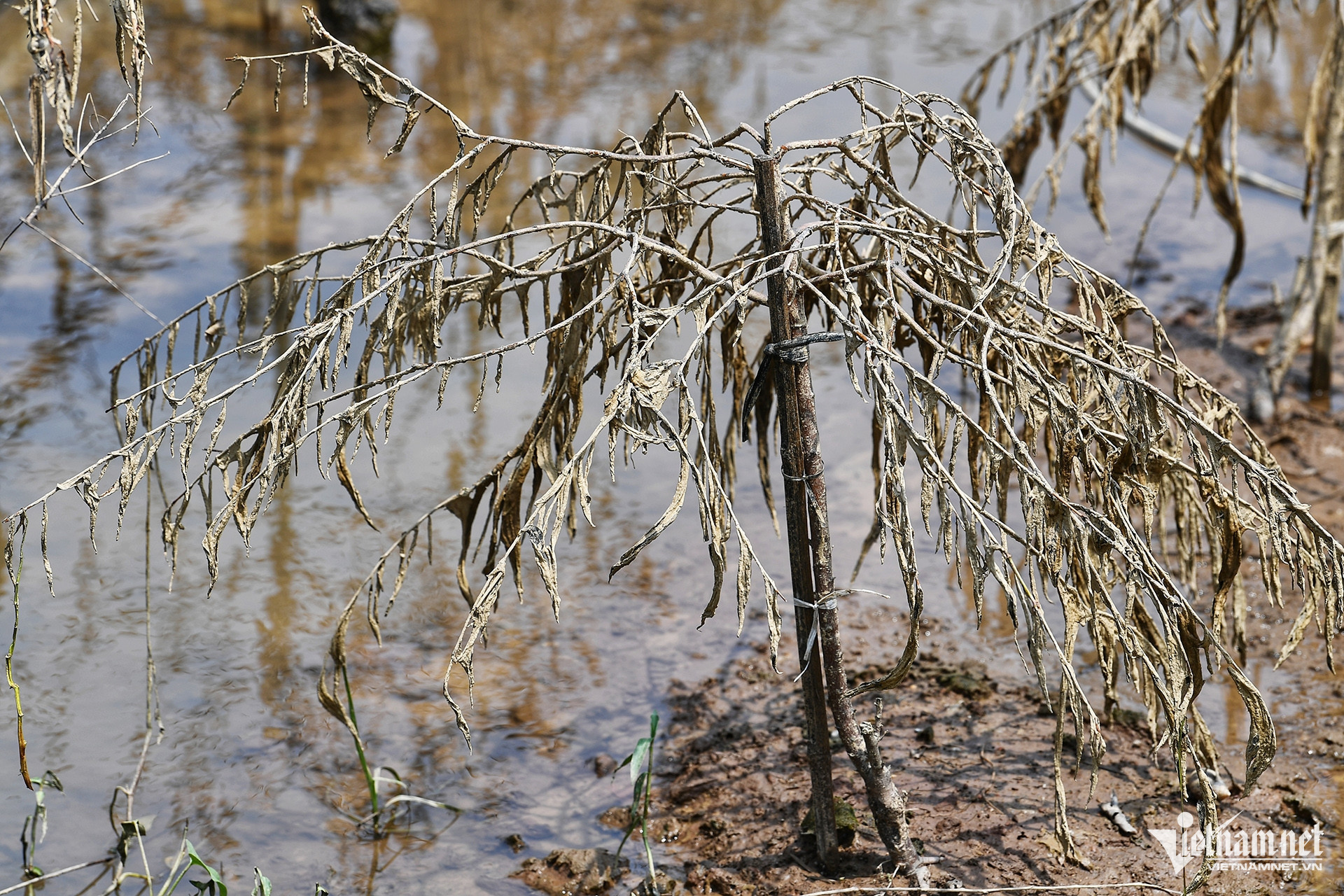
A corner of the peach field in Group 16, Residential Area 12, Phu Thuong Ward, Tay Ho District (Hanoi). This area suffered the most damage in Hanoi's traditional ornamental tree village during the recent Red River flooding.

These days, local farmers are left waiting for the fields to dry before they can begin the arduous process of cleaning up and preparing for a new planting season. Ms. Nguyen Thi Thuy, along with fellow garden owners Ms. Nguyen Thi Nghi and Ms. Mai Thi To, sit together, sharing their grief and checking on each other after the disaster.

All of them are cooperative members and long-time peach garden owners, but even with their experience, they couldn’t avoid the devastation caused by the flood.

According to reports, 100% of the peach trees in Group 16, as well as the trees on land allocated around Nhat Tan Bridge, have died due to prolonged submersion in the floodwaters.

The scene at Mr. Dung’s garden in Group 16 shows that all the peach trees, which would have blossomed in a few more months, have turned into "trash grass."

In addition to their allocated land, many peach farmers in this area rent extra land in Vinh Ngoc commune, Dong Anh district, at a cost of 3 million VND per year per sao (about 360 square meters). Unfortunately, these fields were hit even harder by the flood, leading to heavy losses for families like Mr. Minh, Mr. Thanh, and Ms. Thuy. "My family has 2 hectares of allocated land and 6 sao rented, and all the peach trees have died," Ms. Thuy lamented.

Ms. Nghi shares that despite knowing in advance about the risk of deep flooding, they were powerless to prevent the damage. “At Tu Lien, even trees in pots couldn’t be moved to safety, let alone those rooted in the ground,” she said.

By the morning of September 16, the Red River's water level had dropped by 4 meters compared to previous days but remained higher than usual. Local farmers explained that if the peach trees had only been submerged for 1-2 days, they might have been salvageable. However, after 4 days underwater, the trees had to be discarded, roots and all.

Locals recall the heavy damage from this year’s flood, noting that it was the worst since the storm-induced flooding in 1996, which devastated Phu Thuong and Nhat Tan's peach fields.

Replacing the lost trees will be costly for the farmers. Peach saplings cost around 3 million VND each, while seeds cost about 30,000 VND. After grafting, it will take at least a year before the farmers can have trees ready to sell for the Tet season.

Farmers now face the daunting task of replanting and grafting, with the earliest possible market product arriving by next Tet.

According to a report from Hanoi authorities, over 11,678 hectares of crops have been submerged and damaged, the highest crop loss recorded in the northern region due to the floods.

A report from Nhat Tan ward states that approximately 25.5 hectares of land were flooded, submerging about 20,000 peach trees in total.
Hoang Ha

